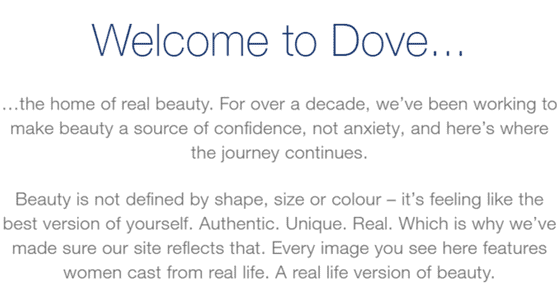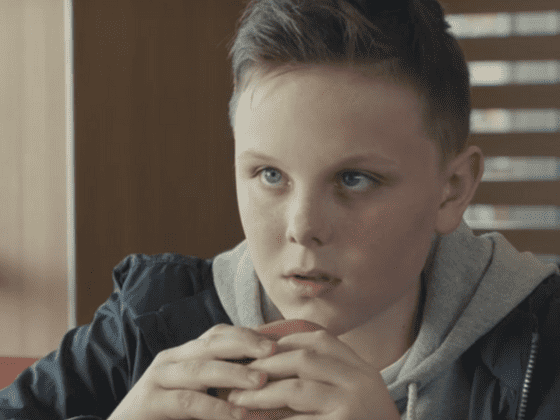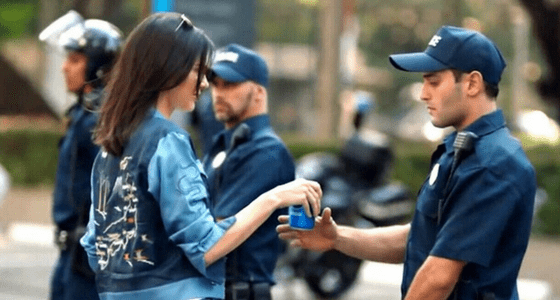RM101: Week 14 – Social Issues in Advertising – The Good, Bad, & Ugly

This week, I’m going to call out brands for addressing social issues in advertising. More specifically, I’m going to talk about why brands need to be careful when trying to address sensitive topics, and we’re going to look at examples of failures of this.
The Good
Before we look at some major flops, let’s take a look at examples of brands successfully addressing social issues.
Most social media users in Canada are familiar with #BellLetsTalk, a campaign in which Bell donates millions of dollars based on how much the hashtag is used, and how many texts are sent over the bell network during that day.

This is all to eliminate the stigma that surrounds mental illness, and it has been a very effective marketing tactic for Bell.
Another terrific example is The Dove Self-Esteem Project, created to aid the self-esteem of young girls. Dove has managed to brand itself so well that its name is nearly synonymous with gentle care and empowerment.
Dove is so committed to this image that this is the first block of text on their homepage:

What Makes Social Advertising Successful
Here’s why I think these were successful campaigns.
#1. They actually made a difference through raising awareness and funds, which is powerful marketing on its own.
#2. They understood the movement (and the demographic they were portraying), making the message on-point.
These two things are what sets “The Good” apart from the rest...
The Bad
Now, for the fun stuff. Here are some ads that shouldn’t have been released. Although “The Bad” doesn't necessarily address social issues directly, these brands definitely danced a little too close to the fire with these.

This is the first is a Heineken ad that was launched (and quickly pulled) earlier this year. I’m not sure how Heineken didn’t see this as racist, but a lot of people let them know very quickly. This one was able to fly somewhat under the radar until picked up by Chance the Rapper who deemed it ‘Terribly racist.’

Another one that ‘missed their mark’ was the McDonalds commercial about a boy who struggled to relate to his deceased father until he realized they both loved filet-o-fish.

This one angered many single parents whose spouses had passed because it was terrible for their children to have to watch. This is completely understandable and incredible that McDonalds didn’t consider this before launching.
McDonalds and Heineken should have simply left such sensitive topics out of their ads. Luckily for these brands, they didn’t receive nearly as much flak as our final example.
The Ugly
I had to save one specific ad for “The Ugly” because I cannot remember an ad that caused such a disrupt on social media. I’m obviously talking about Pepsi ad with Kendall Jenner.

Pepsi made the horrid mistake of posting this ad at the top of the YouTube homepage for all of the Internet to see. In terms of views, it likely performed better than they ever imagined.
However, the Internet took it and ran with it. In this commercial, Pepsi essentially made it seem like every protest and social issue could be solved simply—with a can of Pepsi. The memes and angry tweets that ensued tore Pepsi apart, to the point where they issued multiple apologies, including one to Kendall.

Evidently, she received a lot of negative media attention due to her role in the ad.
This, folks, is what happens when companies try too hard to relate to movements they clearly do not understand. Let’s talk about how to address a social issue correctly.
How to Harness the Power of Movements
Although this might seem like common sense, I’m going to flesh out this issue to make it foolproof (hopefully). Here are the steps that Pepsi (which came out with Lady Doritos after apparently not learning its lesson the first time) must take to avoid angering millions of customers again.
Understand the Movement First.
Don’t address (or even come close to addressing) something that you know little about. If no one on these companies’ marketing teams had first-hand experience with one of these issues, then they should have hired someone who did.
If McDonalds had brought a widow on board, or if Heineken had brought in a Black Lives Matter representative in order to screen these ads before launching, then they wouldn’t have launched. They didn’t think to ask anyone if it was offensive, and rolled the dice. They lost.
Test Everything
Even if they didn’t consult those that they portrayed, it would have been wise to test the ad on a small scale first rather than posting it on the homepage of YouTube, like Pepsi did. The damage would have been mitigated considerably if they had first tested it.
Full Launch
Only after consulting the individuals they portrayed—then testing it—should they have fully launched these ads. Hopefully, these companies have learned their harsh lessons. Let's hope they don’t skip steps #1 and #2 in the future.
Conclusion
These are some of the biggest recent advertising fails and how they could have easily been avoided. Be sure to forward this blog to a friend who’d get a kick out of it. See you next week!
If you’re interested in public relations on social media, then check out our post on the most common hashtag mistakes and how to avoid them.


No comments yet.